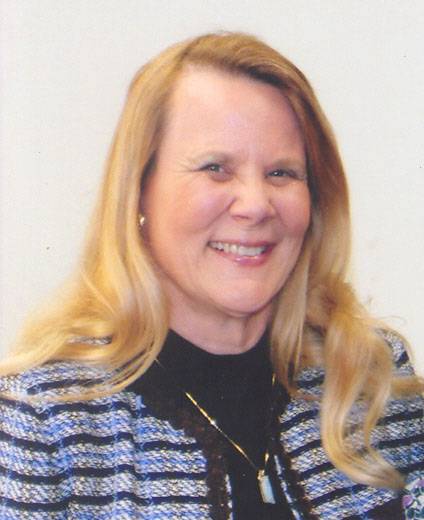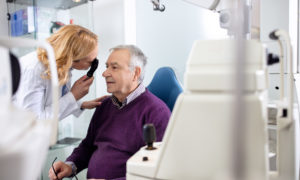By Pamela Miller, OD, FAAO, JD, FNAP

February 4, 2015
SYNOPSIS
Protect yourself legally when co-managing medical eyecare conditions, cataract surgery & LASIK.
PERSONALLY WRITE OR CALL DOCTOR. Write, send diagnostic images and call doctors you refer patients to, especially in cases where sight and health are threatened.
FIND RIGHT DOCTOR FOR PATIENT. Not just the doctor with the skills, but the doctor who takes the kind of insurance the patient has, including if the patient is on Medicaid.
FOLLOW UP WITH DOCTOR & PATIENT. If you don’t hear back from the doctor and patient, reach out to both, and emphasize the need to see the patient back in your office.
In practicing medical eyecare, including providing pre- and post-operative care, you have the opportunity to expand your practice and be part of the team monitoring chronic conditions like diabetes. However, co-management also presents important legal considerations to keep in mind. As with all legal matters, it is important for you to check with your attorney and state optometric board before taking any actions.
Personally Write Or Call MD When Referring
When referring a patient for cataract surgery, LASIK or a medical eyecare condition, it is not enough to give the patient the card of a trusted local doctor and wish them well. A written note or a phone call–and sometimes both–to the doctor you are referring to is important.
Scenario: For example, about six months ago, I had a recently diagnosed diabetic whose condition was uncontrolled. Examining the patient’s eyes with my fundus camera, I had never in 45 years in practice seen such severe hemorrhaging.
Best Practice: I called the retina specialist I refer or send patients for consultation to, and let them know the severity of the case, and that the patient needed to be seen that same day. I also wrote a note to the retina specialist about the patient detailing my findings, and included a copy of the images I had taken with the fundus camera. To the patient, I explained the importance of following up with the specialist: “You have significant hemorrhaging that threatens your sight. I have contacted and briefed a local retina specialist, whom I trust, and he has agreed to work you into his schedule today. It is very important that you see this specialist as soon as possible, so we can do our best to preserve your sight. After you have your appointment with him, he will send me back a report, and we will contact you to schedule a follow-up visit to discuss his findings and how we can best monitor and protect your eyes.”
Be Proactive In Finding Right Doctor For Patient
Sometimes a patient with a sight- or even life-threatening condition also is in dire financial straits. Yet you still need to ensure that patient makes it to the specialist they need.
Scenario: I was examining a young boy whose eyes were healthy, and he didn’t even require any vision correction. There was one potential problem, though: a small mole the boy always had, but which the mother noticed had begun to grow. There was a chance this mole could be cancerous, so this patient definitely needed to be examined by a specialist. An additional challenge was the financial state of the family, which was on state assistance.
Best Practice: I needed to refer through a state healthcare program, to a doctor who would accept Medicaid. I also needed to persuade the mother that it was worth taking the trouble to follow-up with the doctor I found for her son: “I’ve found a doctor about a 15-minute drive from here who accepts your Medicaid insurance. It’s very important that you visit this doctor. I’ve checked and they can see you and your son later this week. The mole in your son’s eye may be nothing to worry about, but there also is a chance that it could be a fast-growing cancerous growth that needs attention.”
Follow-Up with Doctor & Patient
It’s not unusual for me to receive no reports back from the primary care doctors I refer patients to, and it also is commonplace for patients to forget or not want to bother giving our office a call to let us know what the doctor we referred them to determined.
Scenario: You refer a patient, whom you suspect has diabetes, to their primary care doctor to conduct tests to make a diagnosis. You feel so strongly enough about the patient being seen promptly by their family doctor that you even call the doctor yourself and make an appointment for the patient. A few weeks go by and you hear nothing from the doctor or the patient.
Best Practice: Rather than simply forgetting about the patient, thinking you fulfilled your responsibilities by referring to a good specialist, and even making the appointment for the patient, you call both the patient and doctor. First, call the doctor’s office and inquire about the patient, refreshing the doctor about the case on the phone while also sending another copy of the report and diagnostic images you sent when you first contacted the doctor’s office. Then, call the patient and explain to them the conversation you had with their primary care doctor about their diagnosis, and what that diagnosis means to their eye health: “I spoke to Dr. Smith this afternoon and he let me know that he diagnosed you with diabetes. In addition to regularly seeing Dr. Smith and your endocrinologist to get your diabetes under control, it’s important for you to come in to our office for regular examinations, so we can monitor the health of your eyes and get the best prescription for your glasses. Can I transfer you to our receptionist to make an appointment?”
Pamela Miller, OD, FAAO, JD, FNAP, has a solo optometric practice in Highland, Calif. She has a law degree, holds a therapeutic license, is California State Board-certified and glaucoma-certified to prescribe eye medications, and offers comprehensive vision care, contact lenses, visual therapy and low vision services. To contact her: drpam@omnivision.com.

























